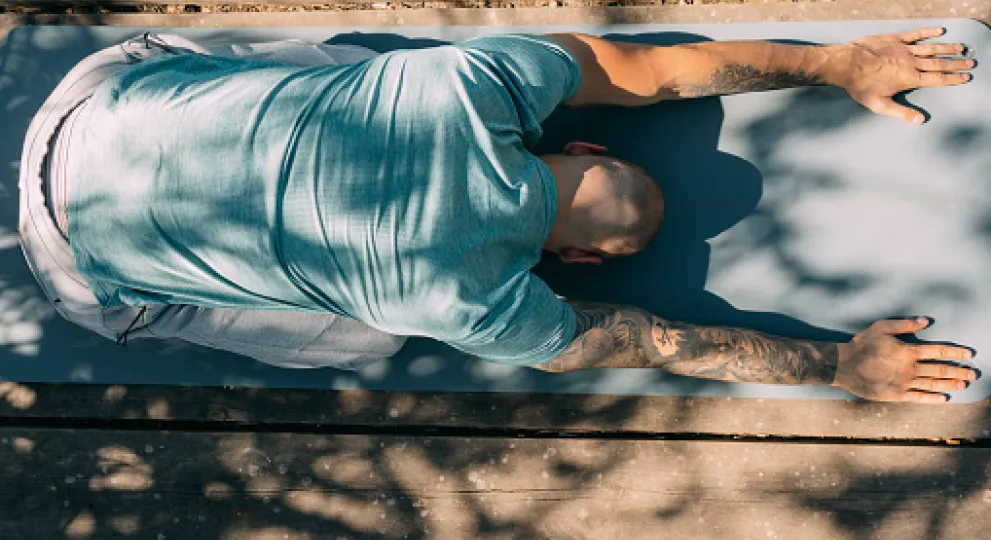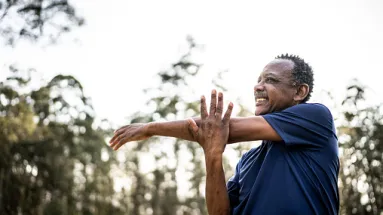Calming yoga poses to care for your body and mind
Calming yoga poses to care for your body and mind

For thousands of years people have practiced yoga, a calming practice for both the body and mind.
If you’re living with cancer and you haven’t tried yoga, it might be something you want to add to your routine. Yoga has been shown to be an effective way to lower stress levels. It may also contribute towards reduced fatigue, better sleep and improve immune system function. There may also be mental health benefits, with studies linking yoga practice to reduced anxiety and depression in people living with cancer.
Dr. Jun Mao, Chief of Integrative Medicine at Memorial Sloan Kettering Cancer Center, said in an article, “There’s a continually emerging body of literature that suggests many of the therapeutics we use, such as massage, acupuncture, meditation, and yoga, have beneficial effects for psychological distress, insomnia, pain, and fatigue. And those are very common in cancer patients.”
Dr. Karen Mustian, a professor of surgery and cancer control at University of Rochester Medical Center, told The Guardian that, just a few decades ago, it was common for doctors to tell people living with cancer to avoid physical activity. But that’s changed. “What I say to doctors is you should recommend to them [cancer patients] yoga as an option and you should help them find places in their community where they can do it.”
As with any kind of physical activity, it’s important to check in with your care team before getting started with yoga. Your provider may be able to advise on whether your treatment causes any physical limitations or other safety considerations. For some people, yoga is safer to do with supervision.
If you’re interested in exploring yoga, here are a few Microsteps that may help you get started and some specific yoga poses you can try. As always, speak with your care team for the guidance and recommendations that are best for you.
Signing up for a yoga class for people living with cancer.
Many hospitals, community centers and cancer clinics offer classes where you can practice yoga safely and under supervision. Consider it an opportunity to take care of yourself and connect with others on a similar journey.
Releasing tension with a bridge pose.
Lie on your back with your knees bent and your feet on the floor, shoulder-width apart. Place your arms on the floor alongside your body, palms down. Slowly lift your hips towards the ceiling, then clasp your hands under your back. Hold for a few breaths, then release gently.
Resting in child's pose.
Kneel on the floor with your knees apart and sit on your heels. Bend forward, lowering your forehead to the floor or a pillow in front of you. Reach out with your arms in front of you or let them rest next to your body. Breathe deeply, and as you breathe out, imagine letting go of any stress you’re feeling.
Breathing deeply in cat-cow pose.
Begin on your hands and knees with your hands positioned under your shoulders and your knees positioned under your hips. Breathe in as you arch your back, tilting your tailbone and head toward the ceiling. Breathe out as you round your spine, tucking your tailbone and chin toward your chest. Cycle between these two positions with each breath.
Opening your chest muscles with modified camel pose.
This pose can be particularly helpful for people with breast cancer. Sit toward the edge of a chair and inhale through your nose, expanding your stomach. As you breathe out, move your arms back to grab the edges of the chair and hold for several breaths.
Doing shoulder rolls to increase mobility.
This pose can be particularly helpful for people with breast cancer. Breathe in through your nose and raise your shoulders up toward your ears. As you breathe out, roll your shoulders back and down in a gentle circular motion. Repeat 3-4 times, then switch directions.
Trying gentle neck stretches to release tension.
This pose can be particularly helpful for people with breast cancer. Raise one hand over your head and put it on the opposite ear. Breathe in through your nose. As you breathe out, gently pull your head toward the raised arm. Hold for a breath or two. Repeat on the other side.
Developed with Thrive Global













